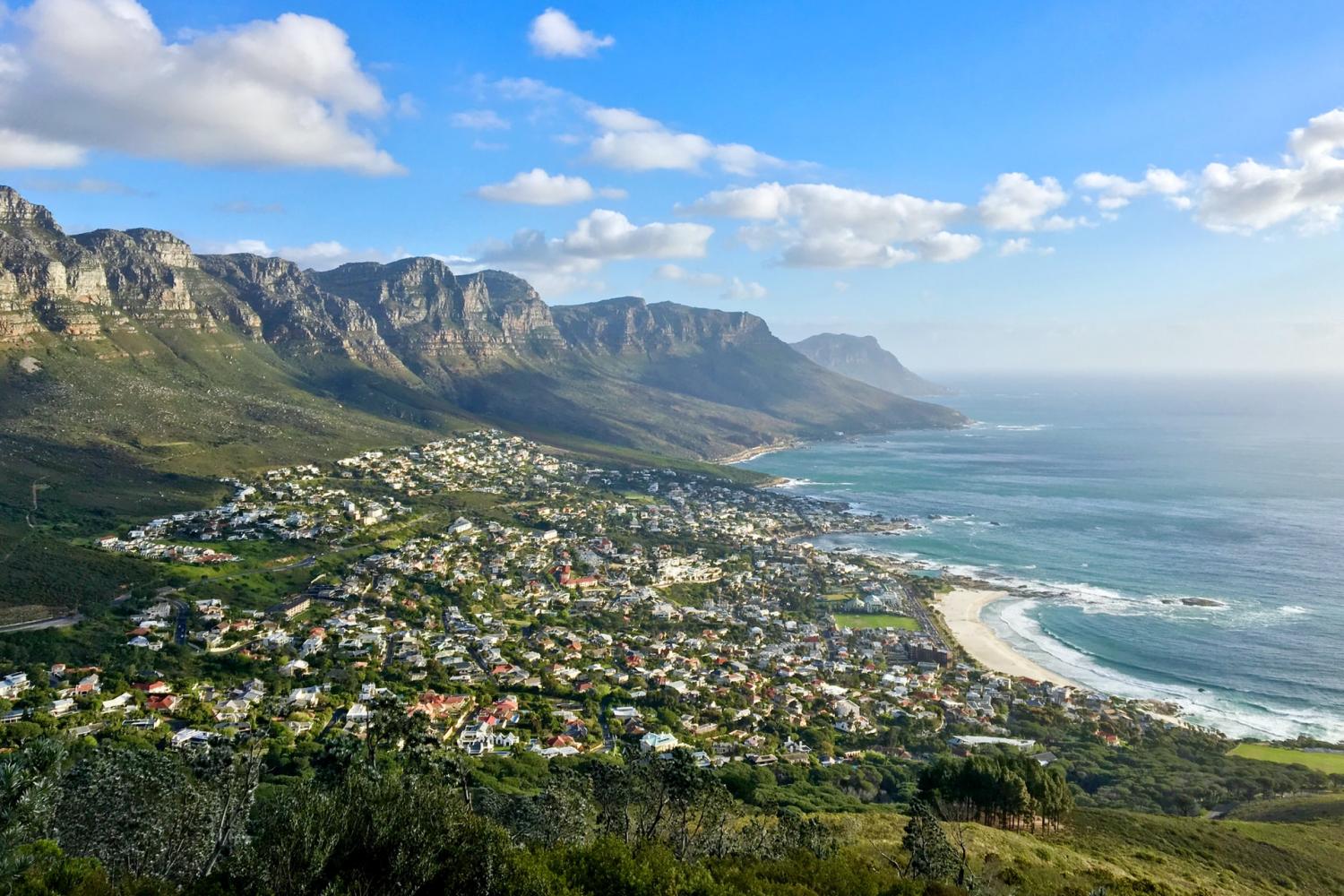The Great Rewiring Of Harley-Davidson, Now With Sustainability And E-Bikes


Under a 2020 business strategy called The Rewire, Harley-Davidson is out to streamline its operations while closing in on an impressive fuel economy goal of 50 miles per gallon for its iconic lineup of gas-powered motorcycles. That could be just the tip of the sustainability iceberg in the company’s 117-year history of manufacturing two-wheeled mobility for the masses. Last week, Harley-Davidson teased out a burst of media fireworks over its stylish new Serial 1 pedal-assisted electric bicycle concept, as a precursor to unveiling the production version of the e-bike on Nov. 16.
Harley hatches secret plan to grow a new generation of e-bike enthusiasts
The very idea of pedaling a machine that sports the Harley-Davidson imprimatur may come as a shock to some. However, followers of the company took note last year when Harley-Davidson announced it was acquiring a startup called StaCyc, maker of the E-Drive electric two-wheeler for children.
Though it does not come with pedals, the 12eDrive two-wheeler meshes perfectly with Harley’s renewed focus on adventure-seeking and outdoor fun. The 12eDrive may also help grow the next generation of Harley loyalists by introducing very small children — ages 3 to 5, to be specific — to the skill involved in motorized two-wheeling.
“The StaCyc 12eDrive is the perfect choice for little rippers with little or no experience on a balance bike,” StaCyc claims in marketing materials. "Your child can learn to push, balance and coast in the non-powered mode. Graduate them to the powered mode (the holy grail of fun) as they show proficient use and understanding of the brake and the ability to coast and brake while standing.”
Pedal-assisted e-bikes open the door for more drivers
Harley’s ability to court the next generation of gas-powered motorcycle buyers has been the subject of media debate for years. The StaCyc acquisition and the new Serial 1 e-bike venture demonstrate that the company is serious about rewiring its business model for the era of electric mobility.
In the conventional motorcycle area, competition from other legacy brands and startups has made affordability a key issue. Many up-and-coming young motorists have little or no extra cash on hand to invest in a premium branded motorcycle, especially so for touring models that are pitched as recreational vehicles.
More broadly, the entire vehicle-buying landscape has shifted. That’s partly due to a decline in the number of young people seeking driver’s licenses, with affordability again playing a role.
Ride-sharing has already taken up some of the slack, and now e-scooters and e-bikes are offering new alternatives that appeal to a tech-savvy generation of vehicle buyers. That’s where the pedal-assist for Harley’s first e-bike venture — and its new startup Serial 1 Cycles — comes in.
The electric motor in a pedal-assisted e-bike only kicks in while the rider is pedaling. That provides it with some significant advantages over fully motorized two-wheelers, whether gas or electric. In the absence of any local restrictions, pedal-assisted e-bikes fall squarely into the bicycle category. They do not require a motorcycle license, or any driver’s license at all. They can also use bike paths and other infrastructure normally reserved for bicycles.
Serial 1: Pedal-assisted power with fun and style
The rising popularity of e-bikes alone provides Harley with ample reason to grab a foothold in the pedal-assist market. The company’s experience in attaching cargo holders to two-wheelers could also come into play, especially in the emerging fleet vehicle market.
In addition, Harley may be eyeballing the potential for attracting avid bicycle riders to the motorcycle market by introducing them to the fun and convenience of motorized power.
Harley also apparently intends the new Serial 1 e-bike to provide the next generation of potential motorcycle riders with an introduction to the company’s history and adventure-seeking culture. Though the production model may go in a different direction, the Serial 1 concept is styled after the company’s first known motorcycle, introduced in 1903 as the Serial One.
“When Harley-Davidson’s founders put power to two wheels and created their first motorcycle in 1903, they changed the way the world moved forever,” reads marketing material for Serial 1 Cycles. The spinoff company claims it will offer “premium e-bicycles guided by intelligent, human-centered design and crafted using the most advanced bicycle technology available, to create the easiest and most intuitive way to experience the fun, freedom and instant adventure of riding a pedal-assist electric bicycle.”
Pedaling into a more sustainable future
The Rewire is Harley-Davidson’s 2020 runup to a soon-to-be-announced, five-year re-organization plan it calls The Hardwire. Aside from shedding inefficiencies in marketing, personnel and manufacturing, the new plan seems poised to leverage the sustainable mobility trend through Harley’s new LiveWire electric motorcycle as well as Serial 1 Cycles.
Meanwhile, the company has been zeroing-in on sustainability for its gas-powered fleet as well. In addition to supply chain and manufacturing improvements, last year Harley announced a 2027 fleetwide fuel economy goal of more than 50 miles per gallon, representing a 25 percent improvement over its 2011 average. Harley already hit the 44 miles-per-gallon mark in 2018, so it’s possible the fleetwide average will far surpass 50 miles per gallon within the next six years or so.
The sustainability angle is a delicate balance for a company that has long cultivated a core customer base of older, you’re-not-the-boss-of-me men. However, Harley appears to be well aware that a younger, more diverse cadre of consumers is driving the mobility market of the future, one that still values freedom while recognizing the importance of collective action and the allure of new clean tech.
One interesting example is Harley’s new marketing campaign featuring actor and environmental activist Jason Momoa; actor Ewan McGregor, who is also known for activities in the environmental area; and travel writer and adventurer Charlie Boorman, who has become an enthusiastic ambassador for electric mobility and sustainable travel.
The campaign is highlighted by Harley Davidson’s The Long Way Up touring video powered by the electric LiveWire motorcycle — and if you’re not quite ready to ride the LiveWire, the Serial 1 e-bike may be just the place to start your own electric mobility journey.
Image courtesy of Harley-Davidson via PRNewswire
Track the Impact of Your Burrito With Chipotle's New 'Real Foodprint' Tool


Fast-casual Mexican restaurant chain Chipotle claims to be the first brand to launch a sustainability impact tracker for all digital food orders. Called Real Foodprint, the new feature shows average values for the sustainability and animal welfare impact of all of its 53 ingredients. The company says it hopes that easy access to the new data will allow customers to tweak their orders toward more ethical or sustainable outcomes.
The impact data will appear on the menu on Chipotle's website and customer app. These impact values will be shown next to industry average values for each ingredient, enabling a comparison with conventional ingredients against five key metrics: carbon in the atmosphere saved, water saved, supported organic land, improved soil health and antibiotics avoided.
Customers will also be able to share their order’s impact scores via social media. Bill Nye, the science enthusiast and broadcaster, teamed up with the company to demonstrate the feature in a new TikTok video, showing off how his Chipotle Burrito Bowl measured against the new metrics.
Where does the impact data come from?
In an era of a proliferation of environmental, social and governance (ESG) metrics, knowing the data that companies use is impartial and reliable can be a challenge. In this case, the data used in the Real Foodprint feature is provided by HowGood, an independent research company. HowGood is home to the world’s largest database of sustainability information for products and ingredients, giving Chipotle’s new feature added legitimacy.
The researchers at HowGood collated information from Chipotle’s suppliers and combined it with other data from 450 unique sources. These include peer-reviewed scientific literature and industry research, as well as findings from NGOs and government bodies. This enabled an average impact value to be ascertained for each ingredient.
The average industry baseline values were then established by using data from the U.S. Department of Agriculture and the Food and Drug Administration, as well as from the World Health Organization. Chipotle also aggregated the average percentage of each ingredient used in each menu item.
In a press statement, HowGood’s CEO Alexander Gillett said the new datasets enable a “trailblazing” and truly comprehensive snapshot of each ingredient. Caitlin Leibert, head of sustainability at Chipotle, echoed his sentiment, saying the new feature will enable guests to “make good choices for the planet." Leibert added that the “radical transparency” of the data would also create greater accountability at Chipotle for its impact over time.

A next step for sustainability at Chipotle
On the subject of accountability, Chipotle has been an advocate for a more sustainable agricultural system in the U.S. for decades.
Then-CEO Steve Ells launched Chipotle's “food with integrity” mission statement back in 2001 to address ethical food sourcing. The statement was prompted by an article Ells read at the time on the issue of concentrated animal feeding operations (CAFOs, which are essentially factory farms) — and it ultimately helped define the company’s core values.
The company also has a long track record of emphasizing sustainability and animal welfare in ingredients sourcing. Ells has even testified before the U.S. Congress calling for a reduction in the use of antibiotics in farm animals, so it's no surprise that antibiotic avoidance was chosen as one of Chipotle’s new metrics.
Climate impacts and public health converge
Now more than ever, sustainability and ethical sourcing are hot topics for agriculture and the wider food industry. However, organizations such as the Sustainable Agriculture Network warn that more frequent extreme weather events will put added pressure on farmers to maximize yields. Also, the demand for cheap food still drives industrial farming methods, which increase public health risks, according to organizations like the U.S. Public Interest Group. The group warned in April that factory farm practices provide the perfect breeding ground for the spread of zoonotic viruses, such as the coronavirus, to humans.
The climate crisis and the COVID-19 pandemic have hammered home the issues of human health and sustainability in ways we will never forget. Chipotle’s new ingredients impact feature is therefore auspiciously timed. If Chipotle’s Real Foodprint can move the needle on safer, more sustainable and ethical food choices, even just a little, that’s got to be a good thing.
Images courtesy of Chipotle
This Software Company Made its Family Leave Policy Far More Inclusive


The novel coronavirus pandemic has put new spins and strains on workplaces, schools and families, leading to new perspectives on work and life. One company decided it was time to take another look at its family leave policy.
A perfect time, executives at New Zealand-based accounting software company Xero decided, to enhance the company’s already generous family leave policy with additional time and more inclusive language.
“Overall, there was a lot of excitement and a bit of surprise that we launched it during a pandemic,” said Ben Richmond, Xero’s U.S. country manager, who is based in Colorado. “When you think of what’s going on, people have friends and family at other companies facing layoffs and pay cuts. We've taken this people-first principle.
“This is a time when the world needs leadership on these types of topics,” Richmond continued. “It is important in these crazy times.”
Xero started by throwing out the conventional terms of maternity and paternity leave, calling it family leave and opening it up to any caregivers and their partners. The family support policies are in line with the company’s focus on inclusion and diversity, said Richmond.
“We want to be an inclusive work environment and it’s really about work-life- integration now,” he continued. “We have people who work very hard, but we want to help them on their family journey as well. There are many different families in today's world and this is designed to support equality. We want people to do the best work of their lives, and that’s hard to do if they are not feeling engaged.” The company’s efforts won it a spot in the 2020 Bloomberg Gender-Equality Index.
The revised policy, effective October 1, allows all primary caregivers parental leave payments that are equivalent to 26 weeks, double the previous amount of 13 weeks. If an employee’s partner gives birth to a child or adopts a child, the employee is entitled to six weeks partner leave, which can be taken in two chunks. For employees who receive government parental leave payments that are a percentage of their salaries, such as in Canada, Xero supplements the amount so that employees are still receiving their full weekly earnings.
To help employees stay in the loop during their leave, they can return to work for up to 10 “keeping in touch days,” at their usual salary. Employees returning to work at the end of their leave have the option of easing back into office life during the first two months, by working fewer days or hours or working from home. Employees also receive four weeks vacation.
“This policy is much more future-proofed,” Richmond explained. “We have a lot of same-sex parents and often it can be fathers who are taking on the primary role of caregiving.”
The timing of the policy also works well for Richmond; he and his husband have started planning to have a child and hope to be parents by October 2021. “My husband and I are both very ambitious people,” he said. “Xero is such a cool place to work, but at the same time I really want to be present when we have a young one—this will enable both of us to do it properly. The key thing for us is the flexibility. I want to be part of the [parenthood] journey and this way we can really do both things justice. We can be there for our child and keep growing a career.”
Xero’s policies also are expected to give it an edge in recruiting and retention. The pandemic has accelerated technology trends, making the software market more competitive. “We see promoting these diversity and inclusion parental support policies as super valuable because it shows our employees can thrive-we’ve seen first-hand how it works in the workplace,” Richmond noted. “At the same time, our values have shifted around what is important to us.”
The pandemic and resulting quarantines have highlighted the disparities and shortcomings in family leave policies - when they even exist - in the U.S. While most other countries have national maternity or paternity leave, America has a hodge-podge of programs, offered by employers, states or municipalities. As of 2019, only California, New Jersey, Rhode Island and New York have paid family leave; Connecticut, Washington, Massachusetts, Oregon and the District of Columbia have adopted family leave policies but have not yet implemented them. The only national leave program is the Family and Medical Leave Act (FMLA), which allows employees unpaid time off for illness or to care for family members.
According to new research from ING, a quarter of parents feel the pandemic has made supervisors more understanding about parental responsibilities, but more than half say the hardest challenge for partners has been managing work and family responsibilities.
As a native New Zealander who has lived in Colorado for four years, Richmond has experienced the different perspectives toward leave and seen evidence that American workers' fears of being away is counterproductive. “The data does not prove out the view in the U.S. that taking time off impacts businesses’ ability to achieve their goals,” Richmond said. “We have proof points in our business, because we have operations in other countries where these types of leave policies are more common. The output of people is not affected negatively; it’s greater.”
The productivity of employees in Xero offices in the U.S. has improved since more leave time was added. “In the U.S., it is quite unusual to take time off work,” Richmond continued. “In the southern hemisphere, people take two or three weeks off at a time; here people take a week off once a year. When you leave for just a week, the work just accumulates. If someone is gone for two or three weeks, other people pick up the work. Companies have to invest more time in putting systems and processes in place so people can take longer breaks and develop tighter, more engaged teams so they are not so dependent on one person.”
The old adage that the person who puts in the most hours is the most productive is just that: old. “Working crazy hours shouldn’t be the only way you can grow and get ahead in your career,” according to Richmond. “People who are refreshed will find ways to work faster. They are operating at a better level. It has been proven by enough companies that they can do better things for shareholders if people [employees] are in a better state of mind.”
Xero expects to continue to be lead in the areas of diversity and inclusion. Executives at other companies considering expanding their leave policies should look back on the experiences of employees who had to juggle a family issue and work with limited leave and how they could have helped more, advised Richmond. “Reflect on who could do this better and think beyond parental leave to other types of leave they can offer. Challenge the status quo and reflect on your own experiences and do research in your own space.“
Image credit: Omar Lopez/Unsplash
Stop Allowing This Decision-Making Strategy to Inhibit Climate Resilience Progress


Written with Camilla Gardner
When deciding to act on a resilience project, we often linger on the price tag and let it control our decision-making. Perhaps it’s time to focus our attention on the costs of inaction.
Resilience – our new normal
2020, for sure, has forced each of us to contend with many “new normals.” For many municipalities, budget constraints exacerbated by COVID-19 are forcing them to rethink how to allocate available resources. Wage cuts compounded by health challenges and, for many, a hellish hurricane and fire season have precipitated a multi-crisis reality. At a time when resilience is key more than ever, municipalities increasingly axe sustainability positions and projects.
Why are our priorities so severely shuffled? A primary culprit is the traditional strategy that municipalities employ to make decisions. This process – known as cost-benefit analysis, or CBA – weighs the sum of the benefits of an action against the negatives, or costs, of that action. Frankly, the conventional CBA approach is an archaic process that is incompatible with the modern climate crisis. Here’s why:
Time to rethink the cost-benefit analysis
For starters, the dollar values placed on resilience and mitigation projects (and which, ultimately, dictate whether to pursue a project or not) are an incomplete picture of the outcome. CBA is myopic in the sense that it is structure-centric and lacks a holistic, human-focused tone. It excludes the social and environmental benefits that accrue over time, even decades after project completion.
So many of the most important outcomes of resilience projects – the intangibles that make a city livable and bolster people’s well-being and capacity to thrive – aren’t communicated within the bottom line. Similarly, the costs are immediate and upfront while taking mitigatory action usually has remote, delayed and uncertain benefits. Consequently, economic and social needs and desires that are felt immediately seem more pressing than climate resilience efforts.
Consider a green infrastructure (GI) project, which involves a network that provides the “ingredients” for solving urban and climatic challenges by building with nature. In addition to maintaining water quality and mitigating flooding, GI installations can clear and cool the atmosphere, increase local property values, enhance aesthetics, and improve local health outcomes and social connectivity.
Yet not all of these co-benefits can be reaped right away. When trees are involved, the rate of carbon sequestration, stormwater capture, or urban heat island mitigation may be greatest 20 to 50 years after a project’s completion.
3 ways to take a new approach toward your long-term planning
It is increasingly essential to enhance the visibility of the local impacts derived from climate resilience projects by communicating these co-benefits in the one language that drives decision-making: dollar value. We are losing out a lot by allowing seemingly unfavorable cost-benefit ratios to inhibit progress toward a future we cannot afford not to create. To do so, the following needs to become standard practice for conducting cost-benefit analyses:
Conduct a triple bottom line (social, environmental and financial) CBA
The triple bottom line (or otherwise noted as TBL or 3BL) is an accounting framework with three parts: social, environmental (or ecological) and financial.
Collectively, we rely too heavily on technical and infrastructural solutions to address a much more holistic problem. Too often, the dialogue around climate resilience investment only weighs avoided losses against the physical costs of the (grey) infrastructural investment. Likewise, this conversation usually occurs after disaster strikes. We must shift to highlight proactively that these investments yield a triple dividend.
These include development potential to local communities by stimulating innovation and economic activity bolstered by reduced climate risk, as well as a web of improved social and ecological outcomes that enhance wellbeing for all involved, even if disaster doesn’t strike. Recently, FEMA incorporated ecosystem benefits into its CBA tool. It is a critical first step forward toward legitimizing nature-based climate solutions. But much more needs to be done to move forward.
Pursue innovative strategies to monetize the “intangible” benefits.
Certain values, such as avoided energy costs, can be determined easily via their market price. However, many values don’t have a direct market value – such as the value of social connectivity, the costs of trauma, the loss of community caused by a hurricane or wildfire, or the costs of having to relocate from one’s community.
One solution is contingent valuation. This is an economic survey technique for eliciting willingness to pay for outcomes such as health or that don’t have an obvious price tag.
The United Kingdom’s Sheffield Hallam University study used this process to determine the value of feeling part of the community or of having neighbors looking out for each other: $16,700 and $13,000, respectively. This method has even been used to value human life by determining people’s willingness to pay for risk reduction devices or services that could prove life-saving. For example, the Environmental Protection Agency had valued “statistical life” at an average of $7.4 million in 2006 dollars.
These examples are just the tip of the iceberg of what can and must be valued to make the business case for a more livable future. Unfortunately, contingent valuation is both time and resource-intensive. Moving forward, it is critical to fund research into innovative strategies to monetize these more holistic costs and benefits city by city in a more streamlined, cost-effective manner. Likewise, encouraging policymakers to give greater value to more qualitative considerations – not just the bottom line – is key.
Incorporate a timeline that accounts for longer-term social and environmental benefits.
Even if all co-benefits were internalized, a challenge remains: common discounting practices. They’re designed to take account of the variable timescales over which costs and benefits are distributed. But they give very low (and possibly practically zero) weight to far-off events, namely the social and environmental benefits of resilience projects. Consequently, by discounting, CBA appears to make these benefits disappear. A potential solution: time-declining discount rates. These declining discount rates account for discounting but make future benefits more relevant to the present investors and policymakers.
Finally - making the case for a more equitable future
The effects of climate change are disproportionately felt by lower income and communities of Black, Indigenous and people of color (BIPOC). Accordingly, disaster recovery and adaptation costs and the price of necessary resilience projects are greater. This results in less-favorable cost-benefit ratios. Therefore, resilience investments tend to favor wealthier neighborhoods and overlook the committees with the fewest resources but are the most in harm's way.
By establishing the strategies discussed above as priorities as well as centering on the unique social context in which a project will be applied and focusing more on what is to be gained rather than how much it might cost, our investment decisions can be more informed and equipped to center equity, real climate risk, and the well-being of all.
Camilla Gardner supports the resilience program at the Urban Sustainability Directors Network as a Climate Resilience Consulting associate.
Image credit: Pxhere
Beyond Inclusion: Fostering Belonging in Times of Crisis


In the midst of a global pandemic, an economic recession, and a historic racial equity and justice movement, the idea of business-as-usual has become obsolete as many deal with feelings of isolation and concern about the future.
The workplace itself has become a reflection of the current environment, requiring leaders to reimagine how they strengthen and sustain inclusive work cultures where employees feel like they belong and can thrive, a function typically led by the diversity and inclusion (D&I) teams within a company.
Researchers at McKinsey and the University of Pennsylvania’s Wharton School of Business have identified belonging as another key component to building true inclusion within companies — and one firm putting those findings into practice is Capital One. This year, Capital One expanded its D&I activities to intentionally include belonging as a core concept, starting with renaming itself the Office of Diversity, Inclusion and Belonging (DIB).
“We know our diversity makes us all stronger - more resilient, nimble and innovative,” says Rolddy Leyva, vice president of diversity, inclusion and belonging for Capital One. “Diversity is about who we are. Inclusion is a choice, often made by the person who is including, rather than the person being included. And belonging is about our individual experiences.”
It’s human nature to want to belong: among family, with friends, in your local community and at your workplace. That’s why it's important for companies to create a culture that embraces and celebrates individuality within their organizations.
“It is not enough to have representation. And it's not enough to invite people to the table, especially if those people do not feel welcome, seen, heard or valued,” Leyva added. “Belonging is about creating a culture where individuals feel safe to speak their truth and be their best, most authentic selves. By creating an environment together — where everyone feels a sense of connection, meaning and inspiration — creativity, purpose and impact will be limitless.”

While belonging is not a new concept in diversity and inclusion, there is mounting evidence regarding its importance in the workplace. When workers feel like they belong, companies reap substantial bottom-line benefits.
For example, in a 2019 survey, professional coaching firm BetterUp found that an increased sense of belonging is linked to a 56 percent increase in job performance, a 50 percent drop in turnover risk, and a 75 percent reduction in sick days. For a 10,000-person company, this would result in annual savings of more than $52 million. Employees with higher workplace belonging also reported a 167 percent increase in willingness to recommend their company to others. They also received double the raises and 18 times more promotions.
Understanding the importance of belonging is what propelled Capital One’s formal shift to DIB earlier this year. Then, when the pandemic hit and over 40,000 Capital One associates were forced to work from home overnight, ensuring employees maintained their sense of belonging while working remotely became a fundamental but challenging task.
“We’re firm believers that creating space for dialogue encourages greater awareness and understanding among associates," Leyva explained. "As we managed through the pandemic, we decided to enhance our existing DIB programming by weaving in more virtual touchpoints across the company. We also invested in educational programs that empower our leaders to be more inclusive in their day-to-day interactions with their respective teams."
But just as the organization was adapting its DIB programming to support a near fully remote workforce, the killings of Ahmaud Arbery, Breonna Taylor and George Floyd ignited a historic global movement for racial equity, justice and inclusion. Leyva and his team responded with powerful, relevant programming that quickly became a cultural touchpoint for the organization.
In the days after the killing of George Floyd, Capital One organized a company-wide Town Hall event that hosted more than 24,000 associates on the topic of race. It was a defining moment in the company’s DIB journey and the single largest DIB event in its history. Following the success of the Town Hall, two additional discussions on race took place with speakers like Michele Norris of the Race Card Project and Ijeoma Oluo, author of So You Want to Talk About Race. In total, over 50,000 associates participated in one or more of the racial equity and inclusion events that the Capital One DIB team hosted over a seven-week period in June and July, with additional events and resources scheduled throughout the remainder of the year.
“We saw tens of thousands of associates come together to grow their awareness and understanding of the issues, share their own personal stories, and commit to the work we must all do to achieve our belonging ambitions,” Leyva said. “As we pressed forward on our DIB strategy, our focus to create lasting change remained the same. I believe our efforts have been effective because we’ve coupled strategically bold ideas and powerful programming with thoughtful action and accountability to ensure we achieve our stated diversity, inclusion and belonging ambitions.”
"I don't recall a time when we were able to have such personal conversations so freely,” said one Capital One associate. “I've seen associates become more comfortable with engaging in dialogue while sharing their own vulnerability as the weeks continue on the topic of DIB and allyship. It's been emotional and I'm hopeful for continued social progress.”
Companies are now accepting new responsibilities as champions for change. Adapting your organization’s D&I initiatives to include belonging can be a simple transition with lasting impact.
To make a step toward progress, Leyva believes that culture starts with you. “Understand where your blinders are, and then take the steps needed to educate yourself,” he advised. “Take inventory of what you know and don’t know. Listen to the voices of others — employees, customers and your communities — and know that by considering their values, attitudes and beliefs within your day-to-day, you are doing the necessary work on the path to creating a culture of belonging.”
This article series is sponsored by Capital One and produced by the TriplePundit editorial team.
Image credit: Shane Rounce via Unsplash
Sifting a CSR Lesson from the Ashes of the Trump Presidency


U.S. President Donald Trump swept into office on the wings of a simple formula: He provided racists with a bottom-line excuse to cast their vote in his favor. On the campaign trail, he excoriated Mexicans and Muslims while promising to save coal jobs and “make America great again.” That promise of the Trump presidency had fallen flat before the COVID-19 virus hit the U.S., and it rings most hollow in the fossil energy sector as the nation struggles in the grip of the crisis.
Saving all your coal jobs — not
All throughout the 2016 campaign cycle, Trump made bringing back coal jobs the centerpiece of his rhetoric. As coal employment is overwhelmingly white and male, the focus on coal covered both the racial and the bottom-line sides of Trump’s campaign coin.
The rhetoric appealed to a bygone era when structural racism, segregation and Jim Crow laws were considered acceptable by the white majority, but it had no footing in reality. When Trump took office in January 2017, the U.S. population was already trending toward a majority comprised of a diversity made up of ethnic and racial minorities. Meanwhile, the nation was steadily pivoting its energy profile toward renewable resources.
Trump did make some gestures that would seem to force a reversal of course for renewable energy. For example, in June 2017 he announced that the U.S. would pull out of the Paris Agreement on climate change.
However, he ignored the 800-pound gorilla in the room. By the time Trump took office in January 2017, leading global businesses and popular U.S. brands were already advocating vigorously for taking action on climate change through renewable energy and a national net-zero goal. They have continued to leverage their influence all throughout the Trump presidency in their support of clean power trends.
In addition, at least two broadly influential federal agencies, the Department of Energy and the Department of Defense, have continued to support and advocate for clean power throughout Trump’s time in office. To cite just two examples: The Energy Department is promoting a goal of making solar power affordable for all U.S. households by 2025, and the Air Force just announced a call to for public- and private-sector innovators to put the entire Department of Defense on a trajectory toward carbon-negative status.
Overall, the impact on coal employment has been devastating. The Trump presidency has presided over an era of coal power plant closures, mining company bankruptcies, and job losses, a trend that began accelerating even before the COVID-19 crisis gathered force.
The Trump presidency pivot to oil and gas falls flat
Trump himself apparently saw the writing on the coal wall, as evidenced by his State of the Union address on Feb. 5, 2019. With barely more than two years in office behind him, Trump indicated he had given up on the idea of saving coal jobs. In fact, he didn’t mention coal at all.
“We have unleashed a revolution in American energy — the United States is now the number one producer of oil and natural gas in the world. And now, for the first time in 65 years, we are a net exporter of energy,” Trump said.
If Trump’s track record on coal was any indication, oil and gas executives should have begun making alternative plans for the future.
For that matter, oil and gas executives could have taken a cue from the Defense Department’s continued commitment to renewable energy. After all, the agency is the single largest institutional user of oil in the world.
However, the damage is already done. Earlier this week, the news organization Politico drew a portrait of the once-great U.S. oil industry in a state of collapse.
Reporter Ben Lefebvre noted that a wave of bankruptcies began surging in 2019 as global oil prices softened, but that was just a hint of things to come.
“Though some of those industry woes were emerging last year as companies grappled with a glut of oil, people in the business say they were made worse by the president’s trade wars and mishandling of the coronavirus pandemic,” he wrote. “So far least 40 U.S. oil companies have sought bankruptcy protection in 2020 while dozens of others have slashed spending and cut tens of thousands of jobs.”
Ominous signs are also brewing for gas workers. Once touted as a cleaner alternative to coal, natural gas is beginning to lose its footing in the electricity generation market as the cost of wind and solar power continue to fall. The petrochemical market is also beginning to show signs of weakness. Bio-based alternatives, next-generation recycling, and consumer preferences are gathering force and influencing C-suite decision makers, including top executives at BP and other leading oil and gas producers.
In one recent red flag for U.S. gas exporters, the Trump administration’s rollback of regulations for methane emissions has compelled the government of France to question a 20-year, $7 billion liquid natural gas contract brokered by the firm Engie. As reported by Reuters, Trump’s trade policies were also a factor in the government’s reluctance to approve the deal.
Businesses on red alert after four years of Trump
At the beginning of the Trump presidency, U.S. business leaders responded forcefully to his anti-immigrant policies. Unfortunately, the lessons of those first months did not take hold.
Many business leaders have stepped up their voter participation activities during the 2020 election cycle, but aside from a few notable exceptions, they have been reluctant to advocate publicly for booting Trump out of office.
Meanwhile, with his bottom-line case for re-election fading to the background, Trump has doubled down in his appeal to racist voters. He has whipped up white supremacist violence while hurling accusations of widespread voter fraud and threatening to hold office regardless of the results of the election.
The ramped-up racial strategy marking the Trump presidency has also involved the full weight of the federal government under a new Executive Order that effectively halted diversity training among federal agencies and contractors.
The wall of silence may be about to break. Last week, Expensify CEO David Barrett fired off a public letter and emailed it to his company’s 10 million customers, calling out Trump by name and making a powerful bottom-line case for electing his challenger, Joe Biden.
The results of the election may help determine whether or not Barrett’s letter influenced any votes. What the Trump presidency has made certain, though, is that business leaders need to raise their voices more forcefully in support of the democratic process, not just in the run-up to Election Day but in the days and months following.
Image credit: Filip Urban/Unsplash
The Ocean Cleanup Flashes Sunglasses Made from Ocean Plastic


A small Dutch nonprofit made a big step for ocean health and a circular economy this month. The Ocean Cleanup, which is collecting and repurposing the plastic floating in the Great Pacific Garbage Patch, has created sunglasses from its first catch.
It certainly is one way to raise awareness about the ocean plastic crisis among consumers.
“We chose to make timeless sunglasses as our first product because they are durable, useful and, since we’re dependent on word-of-mouth to spread our mission, we hope that by making something that is often carried around, they can also help create awareness,” The Ocean Cleanup said in a press release.
Sunglasses meant to last, spread awareness and fund ocean cleaning
The sunglasses were made using the nonprofit’s first plastics catch from last December and are meant to be both durable and treasured. Though made from trash, this premium product was designed to be kept forever. The glasses were conceived by industrial designer Yves Béhar and created in Italy by the eyewear company Safilo. Frames are made from certified high-quality plastic. Even if a pair turns out to be neither durable nor treasured, it can be easily disassembled and recycled.
According to The Ocean Cleanup, each pair carries with it a higher purpose to raise awareness and fund further cleanups. A unique QR code on the frame links to the specific story of the plastics used to create it and also enables a lost-and-found feature. This is all possible because the 2019 catch was immediately tracked and audited.
This nonprofit also says it is reinvesting all proceeds to cleaning up more trash from the ocean. Simply selling a single pair, The Ocean Cleanup says, funds clearing 24 football fields of plastic in the Great Pacific Garbage Patch. Selling all available sunglasses has the potential to clean the equivalent of 500,000 such fields worth of plastic.
Reversing the flow of plastics, catalyzing comprehensive change
The amount of plastic reaching the oceans could nearly triple by 2040, Pew Charitable Trusts and the think tank SystemIQ revealed earlier this year. But if we embrace a circular economy centered on reusing and recycling, plastic pollution could be reduced by 80 percent over the next two decades, according to their the report.
A complete overhaul could cost $600 billion, but procrastinating would cost $70 billion more, Pew estimates.
While The Ocean Cleanup is only a small organization, it aims to collect 90 percent of ocean plastic pollution by 2040 through its cleaning technologies and circular innovations. Of course, it won’t achieve this feat alone, but its fervent example may inspire companies, even industries, to shift their practices.
It’s not always clear what can spur change. Two years ago, plastic straw bans began to sweep the world, partly due to a marine biologist recording and posting the removal of a plastic straw from a turtle’s nose. Eliminating plastic straws may not have been the end-all and be-all for solving pollution, but there’s no calculating the impact increased awareness of the larger plastics crisis had for plastic bag bans, a growing zero-waste lifestyle movement and amplified corporate sustainability commitments.
A long road ahead for ocean cleanup
Stopping the flow of plastic from product to trash to microplastics will certainly require a multi-tiered solution. A "Blue Paper" published this summer by the High Level Panel for a Sustainable Ocean Economy emphasized that counteracting ocean pollution effectively will require going upstream to sources like stormwater runoff. One reason The Ocean Cleanup is beginning with the trash gyrating in the Great Pacific Garbage Patch is because the plastic already trapped there will simply continue to break down, becoming more of a hazard to ocean life. “Once trapped in a gyre, the plastic will slowly break down into microplastics and become increasingly easier to mistake for food by sea life,” The Ocean Cleanup writes on its website.
This first simple product has been seven years in the making — since the nonprofit was founded by an ambitious college dropout in 2013. If anything, sporting ocean plastic sunglasses will support a persistent effort to both preserve the health of our oceans and reverse the course of our linear economy.
Image credit: The Ocean Cleanup media gallery
The 2020 Election Memo: We Agree More Often Than Not, and Business Should Take That Cue


Here is something you don’t hear from the mainstream or fringe media about the 2020 election that has profound relevance to all of us as citizens and business leaders. In fact, maybe it is the birth of a new fringe “conspiracy” theory.
Contrary to how divided a nation we seem to be, the majority of Americans, regardless of political party affiliation, do agree on the most pressing issues of our time. Climate change, the environment, social and income inequality, health care, and immigration, are primary. New essential roles are required of the government and the private sector to create positive change.
Addressing these important concerns is paramount to preserving our leadership in the world. It is required in order to sustain an adequate and healthy workforce and work environment. And preserving democracy and our leadership can help spark innovative solutions that will drive government and business investments in technology and human capital for years to come.
The 2020 election, climate change and the environment
In a new survey conducted in August by Resources for the Future and Stanford University, over 80 percent of American adults believe that the climate has warmed over the past 100 years, and that human activity is responsible. Over 65 percent feel that the government and U.S. businesses should do more to deal with global warming.
In a Pew Research Center survey published in May, 80 percent of Americans agree there should be tougher restrictions on power plant carbon emissions, and 84 percent agree there should be incentives for businesses to develop carbon capture and storage technology and renewable energy sources.
Such overwhelming agreement on climate change and the environment transcends partisan politics and political party affiliation.
Social and economic inequality
Income inequality leads to greater health problems and social discord, which directly impact on a society’s productivity. In 2019 the World Bank ranked the U.S. as having one of the higher inequalities of wealth distribution in the world.
A Pew Research Center study published in January found that 61 percent of Americans agree that social and economic inequality in the U.S. is a major problem. 81 percent say racial and ethnic discrimination is a problem in the U.S.
American’s overwhelming agreement on the need to pursue greater racial, social and economic equality transcends partisan politics and political party affiliation.
Healthcare and why it’s important for an efficient workforce
Access to affordable health care is critical to a functional society and high-performing workforce - it's also been one of the more important issues to voters in the 2020 election as this pandemic takes it toll.
According to a Commonwealth Fund Healthcare poll conducted in June, months into the COVID-19 pandemic, 74 percent of Americans – 81 percent of those who vote more with Democrats and 65 percent of citizens who vote more in alignment with Republicans – agree that all Americans should have the option of securing health insurance coverage through government-regulated and -subsidized health plans when other options are not available or unaffordable.
Such overwhelming agreement on the government’s responsibility for assuring that all Americans have access to health care coverage transcends partisan politics and political party affiliation.
Immigration must be fixed
Although the majority of Americans support a temporary ban on immigration to slow the spread of the COVID-19 coronavirus, according to a recent Gallup poll, 77 percent of Americans agree that immigration makes the U.S. stronger. Only 19 percent believe that immigration is bad for the country.
The data make it clear: Americans’ consensus on immigration policy transcends partisan politics and political party affiliation.
Americans’ perception of the direction of the U.S.
According to the most recent polls compiled by Real-Clear Politics, only 30 percent of Americans agree that the country is headed in the right direction.
62 percent of Americans believe the country is on the wrong track. Lack of government action that aligns with majority positions on the issues can be considered a major cause.
What can we do about it?
If you are passionate about one or more of the issues that most Americans agree on, and you believe that the essence of our democracy is majority rule, be sure you vote in the 2020 election if you haven’t done so yet. It is imperative for citizens to vote in this election and again in the 2022 mid-term elections. Vote for federal, state and regional candidates who will enact legislation that represents the positions of a majority of Americans.
We can make change happen when we choose to vote. In addition to practicing good corporate stewardship, the most important thing we in business can do is to assure that majority rule indeed drives the U.S. legislative agenda, which will take us on a path. With our legislators and private sector aligned we will experience sustainable economic growth while embracing the environmental and social challenges we face as a nation united.
Image credit: Shutterstock
Ecolab, Water.org Partner on Expanding Access to Clean Water


In the past two years, two large global cities - Chennai in India and Cape Town in South Africa - nearly ran out of water. The day when the water was predicted to run out was dubbed “Day Zero.” Both cities managed to avoid the catastrophe, but the crises brought a couple of huge challenges to the forefront: more than one city in the world is balancing on the razor’s edge of water availability, and low-income communities will struggle the most when clean water becomes scarce.
Water scarcity in the 21st century
As many other cities around the world will experience in the future, both Chennai and Cape Town were hit by a perfect storm of droughts, climate change and disorderly water management. In 2018 and 2019, Cape Town and Chennai, respectively, had each gone through three consecutive years without adequate rain. And while climate change is making droughts around the world more likely and more intense, both of the situations would never have been become so dire they had employed better water management. Disjointed management of resources and ineffective water management are not just a problem for cities in developing countries – such a challenge affects cities across the economic spectrum.
In many cities around the world, including ones located in the U.S., unchecked urban growth is leading to increasing stress on water utilities and infrastructure. Coupled with climate change, it’s a recipe for disaster. For example, the western U.S. - a region undergoing explosive population growth - has reached levels of water stress considered to be a megadrought. With water infrastructure already in bad shape, governments and the private sector - industries and investors - will need to be creative about how they make water supplies sustainable and resilient into the future.
Water scarcity has the harshest impact on the world’s poor
Wealthier cities and communities generally have the resources to access water. But the impending Day Zero for Cape Town highlighted just how severe the dividing line is between rich and poor in the South African city of over four million people. The wealthy were able to hire companies to dig boreholes or to order household desalination systems, and they could continue to fill their swimming pools. The poor had to wait hours in line and hope that the government was able to provide some clean water at a reasonable price so they wouldn’t have to decide between clean water and food.
In both Cape Town and Chennai, the crisis was averted, due in large part to civic leaders taking emergency action and the cities’ citizens changing their habits. Nevertheless, such emergencies shouldn’t have happened in the first place. Now is the time to improve water management practices and invest in sustainable water solutions, before the next drought and water crises hit.
Ecolab’s commitment to clean water
Ecolab is one company working on the ground in India to build economic and community resilience through smart water management in a way that engages local communities. The company has partnered with Water.org to improve access to clean water for 100,000 people living in poverty in India. The organizations’ partnership focuses their efforts around social responsibility, accessibility and water quantity.
Meredith Englund, Ecolab’s Vice President of Water Partnerships, said that with its smart water management for companies, the company knew they wanted to partner with an organization like Water.org. The NGO seeks to make equitable access to water possible through microfinancing in local communities, the results of which can enable investments in both rain catchment systems and toilets for homes or communities.
Ecolab says it will bring those loans to scale. “By supporting the ability of individuals, families and communities to invest in their own infrastructure solutions,” Englund said, “we feel confident that our support is leading to solutions that are both relevant for the local context and sustainable and scalable over time.” The program gives communities an active role in making their water systems more resilient.
In addition to climate change, water management and infrastructure woes, the COVID-19 pandemic has brought the issue of equitable access to clean water to the forefront. While bringing loans to communities, Ecolab says it will also contribute 100 million liters of water to watersheds subject to high stress across India.
Water is a complex, hyper-local issue, but investments and partnerships can help bring more innovative solutions that can address the myriad of water scarcity challenges that civic leaders need to address. Engaging with low-income communities to ensure input into, and ownership of solutions, together provide an essential cornerstone of ensuring all citizens have access to clean water.
Image credit: Tobias Fischer/Unsplash
How Expensify Raised the Bar on Democracy and Corporate Social Responsibility


The business expense management firm Expensify touched off a media firestorm last week, when CEO David Barrett sent an email that reportedly reached all of the company’s 10 million customers with a powerful get-out-the-vote message. Expensify also shared the message on its website and social media. Corporate action in support of voter engagement is nothing new, but the Barrett email went one giant step forward, by specifically urging voters to boot President Trump out of office.
When not voting for Joe Biden and democracy is not an option
Barrett’s advocacy for presidential candidate Joe Biden has touched a nerve with some critics.
However, that misses the point. In his message, Barrett makes no case for supporting Biden from a policy or party loyalty perspective. Instead, he makes a compelling case for preventing Trump from achieving another four-year term in office.
His argument is a simple one. There is no strong third-party candidate in 2020, so it all boils down one person, and Biden happens to be it. He is the one - and the only one - who can prevent Trump from serving as the U.S. president for another four years, or longer as the case may be.
As Barrett emphasizes, there are other ways to not vote for Trump. Writing in a candidate, voting third party, or not voting at all are options, too.
Nevertheless, if the goal is to prevent a second Trump term, then the only action that matters is casting a vote for the candidate named Biden. It’s as simple as that.
The bottom line, existential case for Biden and democracy
Of course, the message is an empty one unless Barrett can convey just why it is so important to keep Trump out of the White House after his first term expires.
Barrett could cite a litany of Trump policies that have harmed businesses, especially those in the tech sector, from immigration bans to a new executive order that places onerous restrictions on diversity training. Withdrawing the U.S. from the Paris Agreement on climate change also puts domestic businesses at a disadvantage as the global marketplace pivots to sustainable technology.
However, Barrett is careful to steer clear of Trump’s policies or experience when making his case, just as he is when referencing Biden.
Instead, his case against Trump rests on the argument that the President poses an existential, bottom-line threat to Expensify, its customers, and other U.S. businesses.
The evidence consists of the president’s own words before and during the 2020 Election cycle, in which he calls into question the very bedrock of democracy: the peaceful transfer of power after an election.
Concurrently, Trump has fostered an environment that encourages intimidation by gangs of armed thugs, who identify as “militia.” That includes encouraging his followers to act as unauthorized poll watchers.
In addition, the current president has repeatedly lied to his followers about his prospects for winning, and has encouraged them to believe that anything other than a Trump victory is a fraudulent outcome.
All of this contributes to the fear, held by Barrett and many others, that widespread violence will break out during Election Day on November 3 and perhaps continue indefinitely.
“Expensify depends on a functioning society and economy; not many expense reports get filed during a civil war,” Barrett emphasizes.
The last word on voter suppression from Expensify
In addition to citing bottom line concerns, Barrett offers an additional, policy-neutral framework for understanding the 2020 election.
He frames it as a referendum on voter suppression, stating that “this election will decide if widespread voter suppression is an acceptable governing tactic.”
“A vote for Trump is to endorse voter suppression, it really is very basic. This isn’t about party politics: if Biden were advocating for half of the voter suppression that Trump is actively doing, then I'd be fighting against Biden, too,” he explains. “This is bigger than politics as usual: this is about the very foundation of our nation.”
Like others who are concerned about Election Day violence, Barrett advocates for the highest possible voter turnout. The thinking is that a Biden victory of overwhelming proportions would counteract any attempt by Trump to thwart the will of the voters through the courts. A wide margin of victory would also help put a damper on any Trump supporters who are planning murder, mayhem, and domestic terrorism.
In that regard, Barrett’s message is not much different than conventional get-out-the-vote efforts supported by business leaders.
After all, these efforts are intended to express the will of the voters to the fullest extent possible, regardless of party policy.
Examples from the 2020 election cycle abound, including the NBA’s offer of arenas for polling places, Levi’s public outreach campaign, and Business for America’s “Time to Vote” campaign, which advocates for companies to provide paid time off for voting.
The only real difference is that Barrett has said the quiet part out loud.
“As CEO of this business, it’s my job to plot a course through any storm -- and all evidence suggests that another 4 (or as Trump has hinted -- 8, or more?) years of Trump leadership will damage our democracy to such an extent, I’m obligated on behalf of shareholders to take any action I can to avoid it,” he concludes. “I am confident our democracy (and Expensify) can survive a Biden presidency. I can’t say the same about Trump. It’s truly as simple as that.”
Image credit: Suzy Brooks/Unsplash